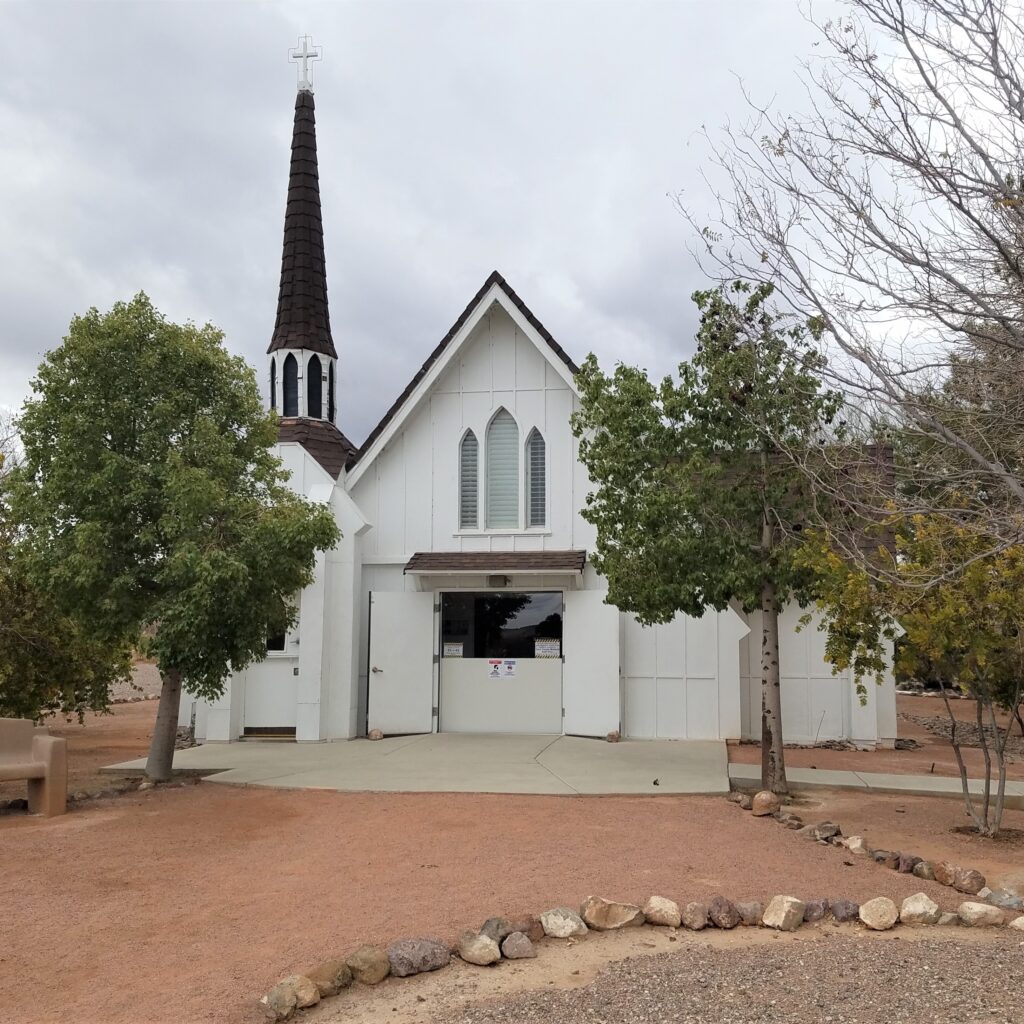
FEATURE — Las Vegas history is replete with cases of “progress” leading to the destruction of beloved buildings and relics. In many cases, the old gives way to the new without much thought of preservation.
And to some, museums are just displays of old stuff that seem to have no significance in the present – artifacts accompanied by text to explain them and not much else.
The Clark County Museum is an anomaly in both of these scenarios. It does feature a by-the-book museum, yes, but the real magic is outside, nearby, where numerous structures built elsewhere have come together and coalesced to show the modern visitor that preservation of historical structures is important because they can provide a glimpse into what life was like in a bygone era.
While today’s museum patrons might assume that the preservation and placement of these buildings was the museum’s plan from the start, they might be surprised that it wasn’t and that the museum traversed previously unknown trails in the Las Vegas Valley to get to where it is today.

A museum where there wasn’t one
The Clark County Museum got its start thanks in part to Las Vegas Valley’s first female funeral director, Anna Roberts Parks, whose first husband was the Vegas Valley’s first mortician. She divorced her first husband, William Roberts, in 1926 and started her own business, Palm Funeral Home – so named for the palm tree she brought from Los Angeles and planted in front of her building.
In December 1928, she married local businessman Gene Parks and was actively involved in Las Vegas’ civic and social organizations, the display about her life in the museum says. Her work took her all over Southern Nevada. It is through these travels that she started adding to her collection of geologic specimens and historic objects.
“She had been quite a rock hound and was interested in Indian artifacts,” said Clark County Museum Administrator Mark Hall-Patton of Parks.
“Eventually, her collection overwhelmed their home and five-acre property,” the museum display explains. “Anna rented a building near 21st and Fremont streets to house the collection.”
After her retirement in 1945, Parks offered her collection to many museums, but none accepted. She died in a car accident in 1962. After her death, her daughter Edith Jennings tried to follow her mother’s wish to find a home for the collection in a Southern Nevada museum.
The trouble was, no museum existed in the Las Vegas Valley at the time. Thankfully, Jennings’ efforts led to the formation of one.
In the mid 1960s, local historian Maryellen Sadovich contacted Henderson Chamber of Commerce President Dick Pryor, concerned about the fate of Parks’ artifact collection. Sadovich and Jennings floated the idea of creating a museum to the Chamber of Commerce in 1966, a proposal that thankfully did not fall on deaf ears.
On April 20, 1968, at 1 p.m., the very first public museum in the Las Vegas Valley opened in a condemned gymnasium in downtown Henderson in what had been the Townsite Grammar School, Hall-Patton wrote in a story to commemorate the Museum’s 50th anniversary. It opened by the name of the Southern Nevada Museum and displayed the Parks collection, loaned to it by Jennings (but eventually became permanent), as well as a few other on-loan collections, including sculptures by a local artist, Hall-Patton said. Interestingly, the museum recently re-acquired one of the sculptures in that collection, a bust of the first local soldier to die in World War I.
It was incorporated as a separate non-profit corporation from the Chamber.
From the beginning, the plan was for the location in the old gym to be temporary. First museum director, Roy Purcell, actively raised money and interest in a new museum site, which the city of Henderson granted to the museum on land along the Boulder Highway with the caveat that it had to have a building on the site by 1975, Hall-Patton said.
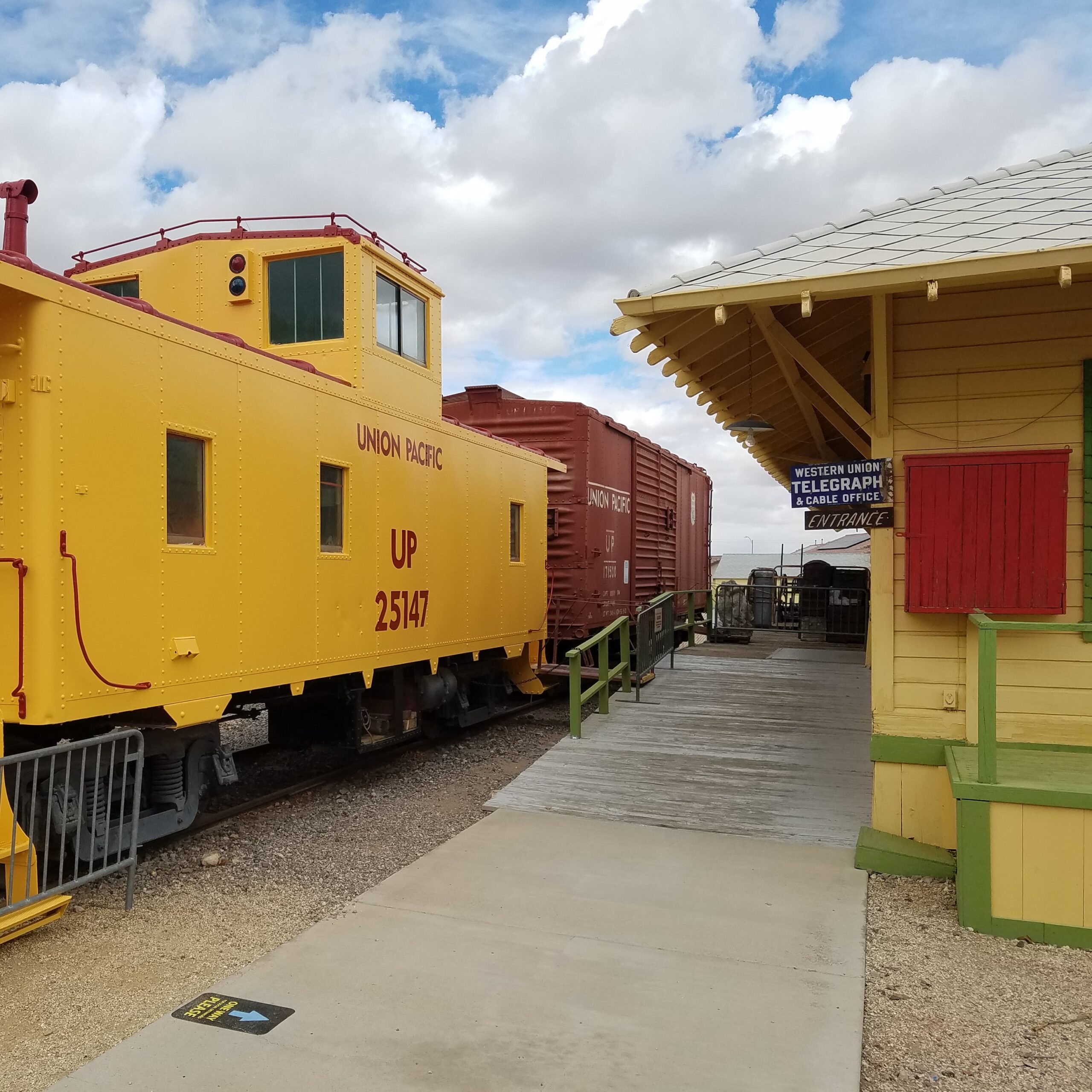
In 1974, the new museum site received its first historic building, the old Union Pacific Boulder City Depot. Hall-Patton said a party was held in the Depot building after its relocation, but then it was closed up until nearly five years later.
The Museum Guild was formed in 1975 to run the museum and raise money for its eventual move to the Boulder Highway site. But by 1978, the Museum Guild was not making enough money to keep the museum open. With the building it was in set to be razed to make way for the new city hall, it looked like the museum was doomed to close. Thankfully, the Guild found a friend in Clark County Commissioner Robert Broadbent, who felt the museum was too valuable to be allowed to close. Broadbent got the rest of the Clark County Commission on board, leading to Clark County to take over the museum. It became part of the county’s Parks and Recreation Division (it has remained under the division’s jurisdiction ever since), who Hall-Patton said didn’t know exactly what to do with it at the time. Thankfully, over the course of its history, it has figured out what to do.
With the boost of county support and funding, the museum opened in the old Boulder City Depot on the Boulder Highway site in March 1979, becoming known as the Clark County Southern Nevada Museum. A trailer next to the Depot building served as the offices for the museum director and curator of exhibits. That same year, the Will and Eva Beckley House was moved to the property from downtown Las Vegas. The original plan was for the Beckley House to replace the trailer as offices and storage, but then a new vision started evolving. The original furnishings were also donated along with the house, which made the museum staff feel like the home should be preserved as a showcase of what life was like in early Las Vegas instead of being turned into offices, Hall-Patton said.
In 1982, the Henderson Townsite House followed the Beckley House to the site, which started a domino effect that led to the formation of “Heritage Street.”
It wasn’t the museum’s original plan to seek out historic buildings and move them to the site, it was the result of happenstance, Hall-Patton noted. It has been a win-win however as the buildings on Heritage Street could not have been preserved in their original locations and are now restored for many people to see what early life in Clark County was like through the true-to-life dioramas in each building.
The museum’s current building was finished and dedicated in 1990 and houses its primary indoor display as well as its offices and archives.
Heritage Street Buildings
Boulder City Depot (moved in 1974; opened in 1979)
The Union Pacific Boulder City Depot was built in 1931 to handle the passengers and freight bound for Boulder City during the construction of the Hoover Dam. Close by it stands a 1920s box car, a 1940s caboose, a speeder and a crossing signal. Today, the back portion of the depot is used for meetings and luncheons.

Beckley House (moved in 1979; opened in 1983)
The last pioneer family home left in downtown Las Vegas, the Beckley Home was saved from demolition due to development pressures in April 1979. Restored to its 1920s and 1930s appearance by removing a later two-story addition in back, it became the first house on the museum’s Heritage Street.
Will and Leva Beckley ran a men’s clothing store in downtown Las Vegas, which was established in 1908 by Will and operated by the two of them after their marriage in 1910.
“The Beckleys would become one of the early success stories of Las Vegas,” a bio of the family in one of the home’s displays reads. “They devoted themselves to the economic and cultural growth of the area. Will was not only an entrepreneur with a reputation for fair dealing but also a builder and shaper of the community.”
The home, at the time of its removal, had been swallowed up in the midst of higher-rise development. Hall-Patton said Leva Buckley lived in the home up until a year before she died and sat on her porch glaring at people as they walked by, disgusted at what was going on around her.
Henderson Townsite House (moved in 1982; opened in 1985)
Henderson got its start when the Basic Magnesium, Inc. (BMI) processing plant was built on vacant land between Las Vegas and Boulder City in 1941-1942. At the time, magnesium, a light and strong metal, was needed in abundance to build airplane bodies and other materials essential for the World War II effort.
To house BMI workers, a townsite of 297 three-bedroom and 702 two-bedroom homes quickly went up. The townsite was named in honor of Charles B. Henderson, a Nevada attorney and U.S. Senator. The townsite home at the museum is a three-bedroom model. Parts from other townsite homes were used in its restoration.

The Donald Reynolds Print Shop (Replica opened in 1984)
Newspapers were the “thread” of the social fabric in communities of Nevada’s earlier days and were the only source for community information for most residents. Besides the telegraph, they were the only source of information from the outside world. The replica print shop is built in the style popular in the late 19th and early 20th centuries. The building displays an 1890 Babcock Printing Press, Mentges folding machine and a national paper cutter used by the Henderson Home News in the 1950s. The edifice honors Donald W. Reynolds (with funding from the foundation that bears his name), who was founder, president and chief executive officer of the Donrey Media Group, which owned and operated the Las Vegas Review-Journal before the newspaper was sold to another company.
The Giles/Barcus House (Moved in 1985; opened in 1989)
Edwin Schofield Giles and his wife Edith Corliss built the home in 1924 in Goldfield, located about 180 miles north of Las Vegas. The house was modern for its location, boasting an indoor toilet, pedestal sink and a shower, while most of the surrounding homes just had an outhouse. The Giles’ daughter, Edith Giles Barcus, couldn’t leave the house behind when she moved to Las Vegas in 1955, relocating it to the corner of Hacienda and Giles streets, where it served as an antique shop. She made provisions that the house be donated to the museum upon her death.
Babcock and Wilcox House (Moved in 1987; opened in 1988)
This home is one of 12 homes built in 1933 in Boulder City for Babcock and Wilcox Company employees working on the Hoover Dam. This two-bedroom house had a half-basement accessible from the laundry porch and featured a screened porch that would often serve as sleeping quarters during hot summer nights. The original residents of this house were Carl and Bessie Butin and their daughter, Mary Ellen, who hailed from Ohio and moved to Boulder City so Carl could be a mechanical engineer with the company.

Motor Court Cabin (Moved in 1987; opened in 2002) and Spartanette Trailer (Moved in 2001; opened in 2002)
Motor court cabins, like the one on display, were affordable accommodations that sprang up in the 1930s when automobile travel increased, before motels were common. It was just a bedroom. Toilet and shower facilities in a central building. The nearby 1947 Spartanette trailer was originally located in the Golden Rule Trailer Park in Pittman. This type of trailer was top of the line at the time and after World War II, many people in the Las Vegas Valley lived in them, creating what were called “Silver Cities.” A 1946 Plymouth is also part of the display.
The Esslinger Barn (Moved in 2002)
In the 1950s, Allen and Helene Esslinger homesteaded five acres on the west side of the Las Vegas Valley. The land was cheap as they paid a $10 application fee to the U.S. Department of the Interior as well as a $375 filing fee for the five-acre site. Their residence was a home they moved from downtown Las Vegas and they built the barn themselves with the help of a friend. The barn became a prominent landmark for that area of town, the corner of Charleston Boulevard and Lindell Road. It served many purposes over the years, including for parties, storage and even antique auto restoration. Today the barn houses personal items from the Esslinger family.

Candlelight Wedding Chapel (moved in 2007; opened in 2009)
Celebrities such as Michael Caine, Bette Midler and Whoopi Goldberg, among others, tied the knot at this chapel, which opened on the Las Vegas Strip in 1966 as the Chapel of the West Algiers since the owner, Jack Walsh, also owned the Algiers Hotel. Later it became the All Religions Chapel and finally the Candlelight Wedding Chapel.
On February 14, 1989, the chapel set the record for most weddings in a single day with 425. It closed in 2003 and sat vacant and vandalized for a few years until Gordon Gust, who operated the business for over 30 years (but did not own the building) purchased it and donated it to the museum.
Grand Canyon Railways Ticket Office/Bradley House (moved in 2002; opened in 2020)
Glover E. “Roxy” Ruckstell used his fortune gained by selling the “Ruckstell Axle” to purchase the fledgling Grand Canyon Airways in 1931. Originally located at the Bullock Field/Boulder City Airport, the building served as a ticketing office. The airline provided tourists with fantastic views of Lake Mead, Hoover Dam and the Grand Canyon from a plane. In 1939, Ruckstell moved the ticket office to 618 Arizona Street in Boulder City.
Ruckstell later gifted the office to Henry and Ocie Bradley, making them the first African-Amerian family to be allowed to live in Boulder City. Henry worked as a chauffeur and general assistant to Ruckstell and Ocie provided boxed lunches for some of Ruckstell’s tours.
The museum restored it to its appearance as a ticketing office and the displays inside chronicle aviation history and the African American experience in the area before World War II.

Visiting the Clark County Museum
The first thing visitors see when they enter the museum property is Union Pacific Engine 4442, a locomotive originally built in 1918 and used as a switcher engine, used to move railroad cars in the Las Vegas railyard. It was in use until 1958 when it was turned over to the City of Las Vegas and placed as the focal point of what was called Fantasy Park, located on Washington Avenue east of Las Vegas Boulevard. When the park was razed to make way for the Grant Sawyer State Building, the 162,000-pound locomotive was turned over to the Clark County Museum in 1984.
The museum boasts more than one million artifacts (not all currently on display, of course) on its 30-acre site, with a modern exhibit hall chronologically chronicling Southern Nevada’s history from prehistoric times to today. When visitors first walk in the museum, they see displays on the area’s Native Americans, followed by artifacts and explanations of its days as a Mormon Fort, a ranching outpost then its founding as a railroad hub in 1905. Next, it turns to its transformation into a gambling mecca and wedding capital.
In addition to its main campus on Boulder Highway, the Clark County Museum administers two other museums, the Howard W. Cannon Aviation Museum at McCarran International Airport and the Searchlight History Museum.
Besides Heritage Street, the other outdoor attraction on the property is a “ghost town” left in “arrested decay,” Hall-Patton explained in the history he wrote about the museum. The town includes the Tuscarora Jail and a toll cabin from Lamoille, Nevada, both constructed in approximately 1880, as well as a general store from the Last Frontier Village, an Old-West themed attraction near the Frontier Hotel in Las Vegas’s glory days created from the collection of Robert “Doby Doc” Caudill, who assembled buildings, wagons, trains and other memorabilia from various Northern Nevada towns.
Hall-Patton and the museum itself have been made famous by the museum administrator’s many appearances on the History Channel’s popular show “Pawn Stars.” The show has meant a lot of free advertising for the museum and some money for it as the show’s producers pay the county $300 for every appearance Hall-Patton makes.
The museum staff receives a lot of questions about the wedding chapel because of the sheer number of weddings solemnized inside and the amount of celebrity weddings it hosted. There are no more weddings held inside, Hall-Patton noted, because the building is now just a display.
Visitors are also fascinated by the timeline of history before the Strip.
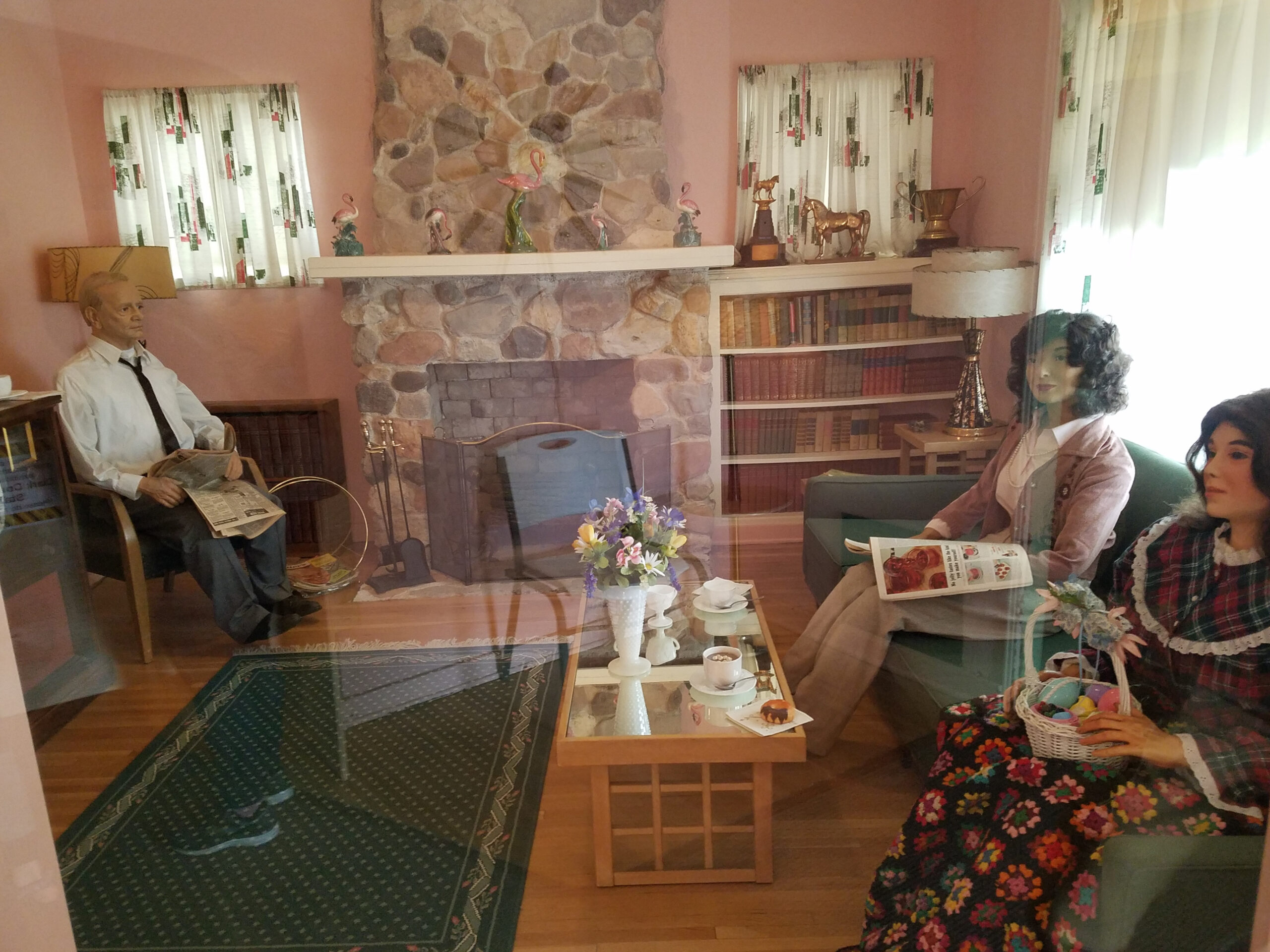
“Las Vegas wasn’t created by Bugsy Siegel,” Hall-Patton joked.
The main attraction for visitors is strolling through the homes on Heritage Street. Hall-Patton explained that the houses “are not embalmed,” which is something on which museum staff pride themselves.
“When you come, you see themes shown as if someone is living there,” Hall-Patton said.
For instance, when Christmas rolls around, the homes are decorated for Christmas with period decorations. This reflects the museum’s goal to show visitors what life was like in the time periods in which the buildings on Heritage Street were in their heyday.
Hall-Patton said that the museum wants to show that the past is not in one’s imagination.
“(The museum) helps friends and families start conversations – to see the past as a ‘real’ past,” he concluded.
For more information on visiting the Clark County Museum, please visit its website.
Click on photo to enlarge it, then use your left-right arrow keys to cycle through the gallery.
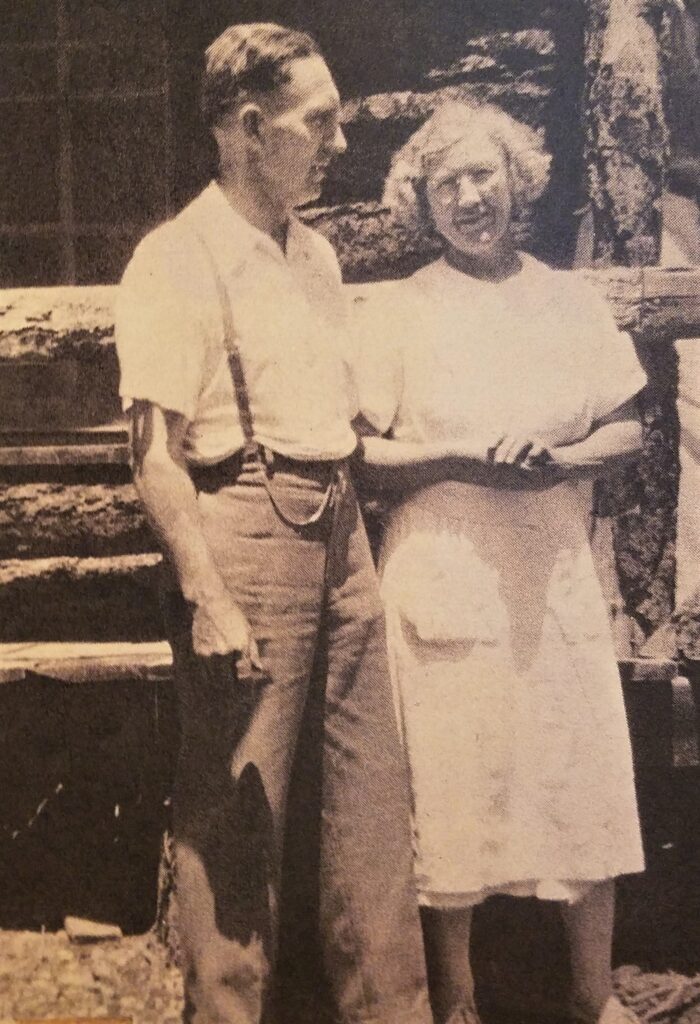
This photo of an undated portrait of Anna Parks and her husband, Gene, is on display in the Clark County Museum. It was Parks' collection of artifacts that helped get the Museum going, Henderson, Nevada, March 11, 2021 | Photo by Reuben Wadsworth, St. George News
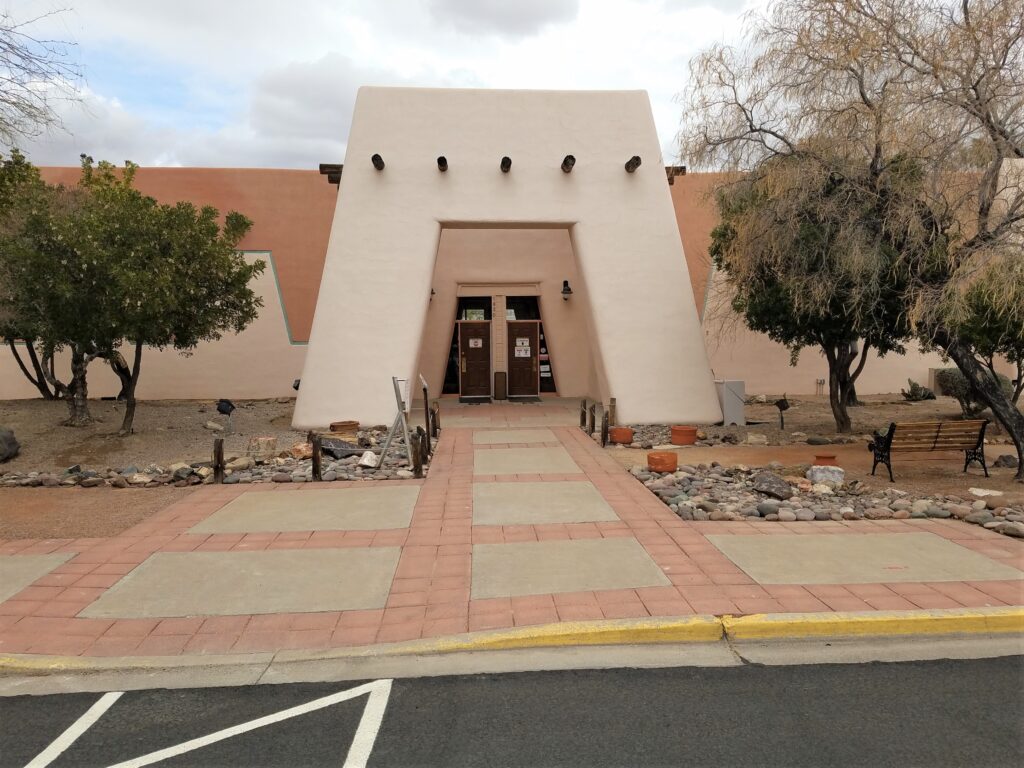
The building which houses the Clark County Museum's indoor exhibits was finished and dedicated in 1990, Henderson, Nevada, March 11, 2021 | Photo by Reuben Wadsworth, St. George News
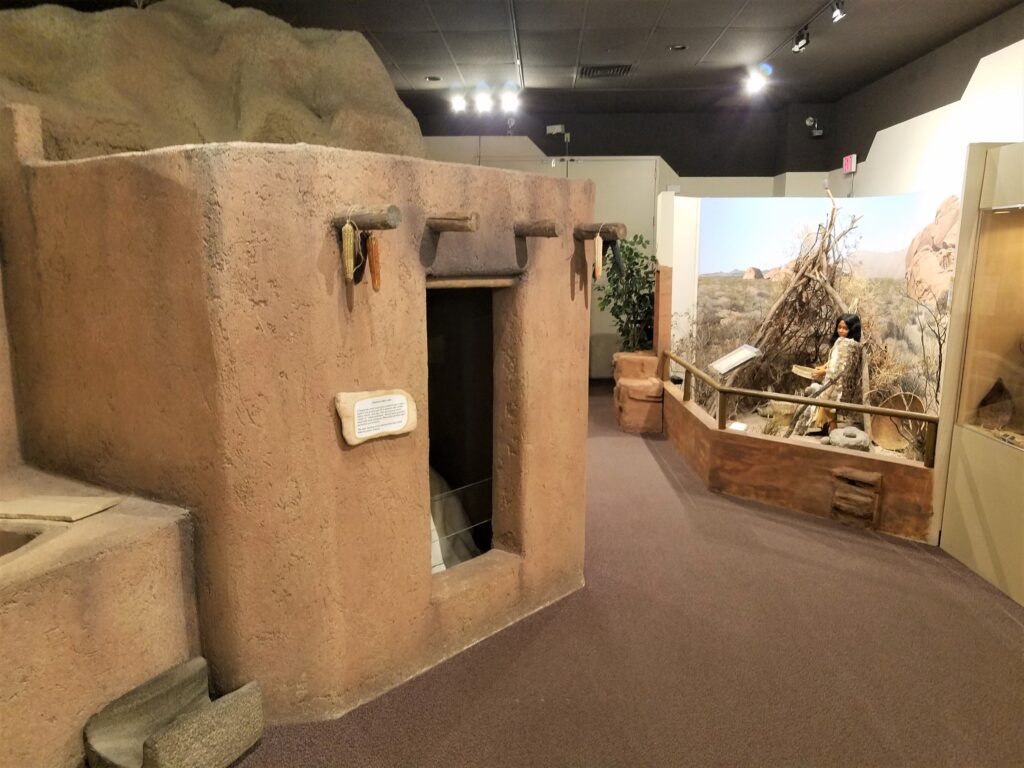
Visitors see displays and dioramas of Native American artifacts as they enter the Clark County Museum, Henderson, Nevada, March 11, 2021 | Photo by Reuben Wadsworth, St. George News

This diorama represents the period when Las Vegas was an isolated ranch in the late 19th century, Clark County Museum, Henderson, Nevada, March 11, 2021 | Photo by Reuben Wadsworth, St. George News
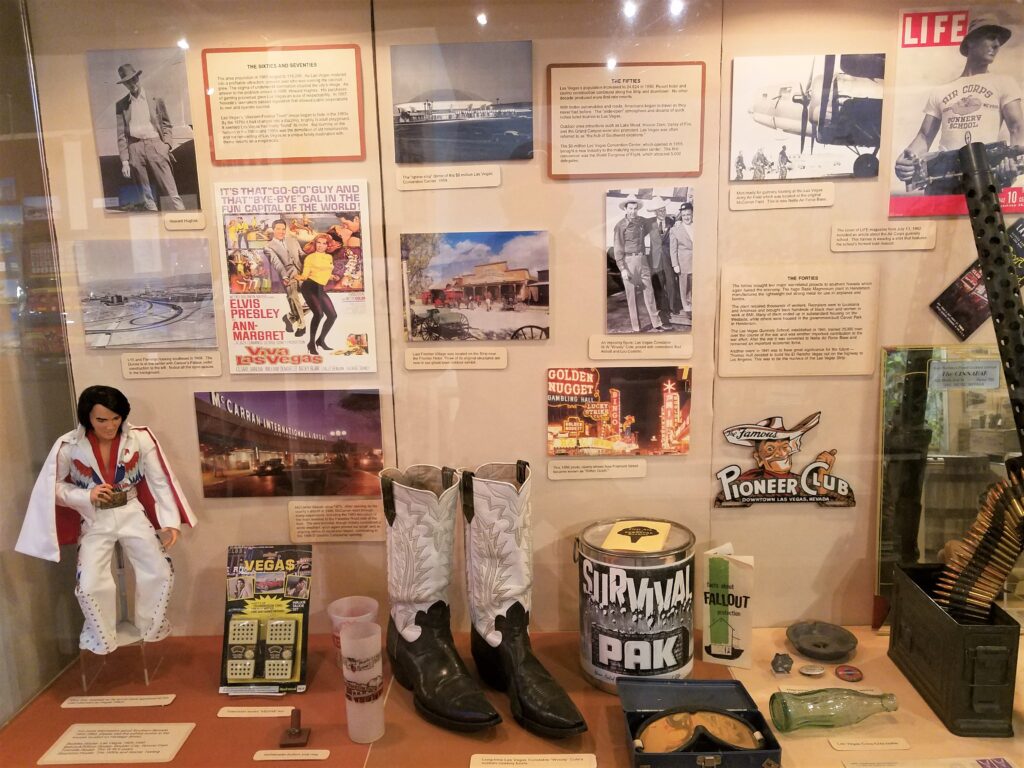
This museum display covers Las Vegas history from the 1930s to the 1970s with memorable artifacts and photographs, Clark County Museum, Henderson, Nevada, March 11, 2021 | Photo by Reuben Wadsworth, St. George News

The museum features a display of casino equipment from Las Vegas's Golden Age, Clark County Museum, Henderson, Nevada, March 11, 2021 | Photo by Reuben Wadsworth, St. George News

A popular place to get married (and divorced) this display in the Clark County Museum chronicles the wedding chapel industry and famous people who have been married in those wedding chapels, Clark County Museum, Henderson, Nevada, March 11, 2021 | Photo by Reuben Wadsworth, St. George News

The Clark County Museum is home to a former Grand Canyon Airlines ticket station, Clark County Museum, Henderson, Nevada, March 11, 2021 | Photo by Reuben Wadsworth, St. George News
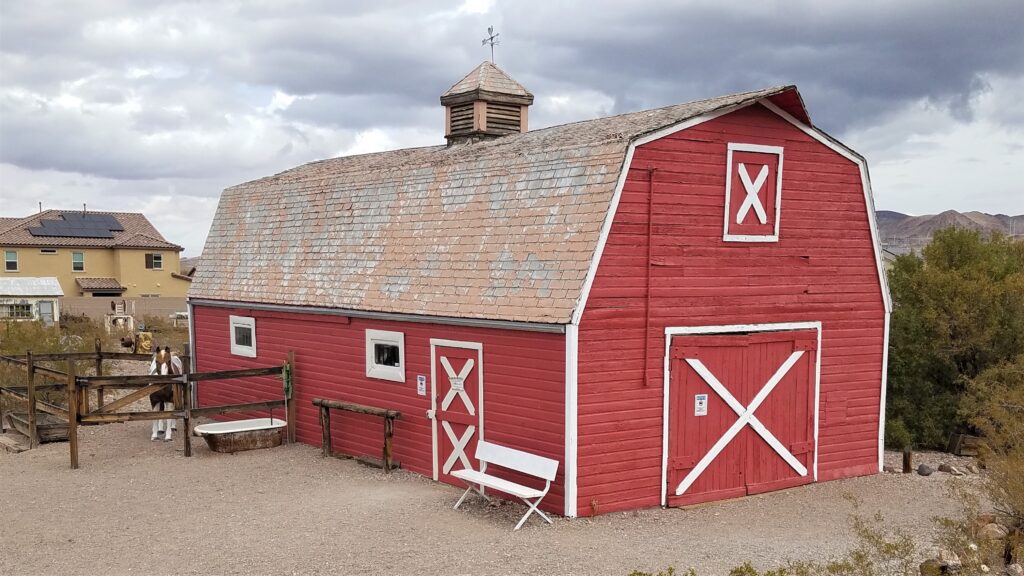
The Esslinger Barn moved to the museum site from the western part of the Las Vegas Valley in 2002, Clark County Museum, Henderson, Nevada, March 11, 2021 | Photo by Reuben Wadsworth, St. George News
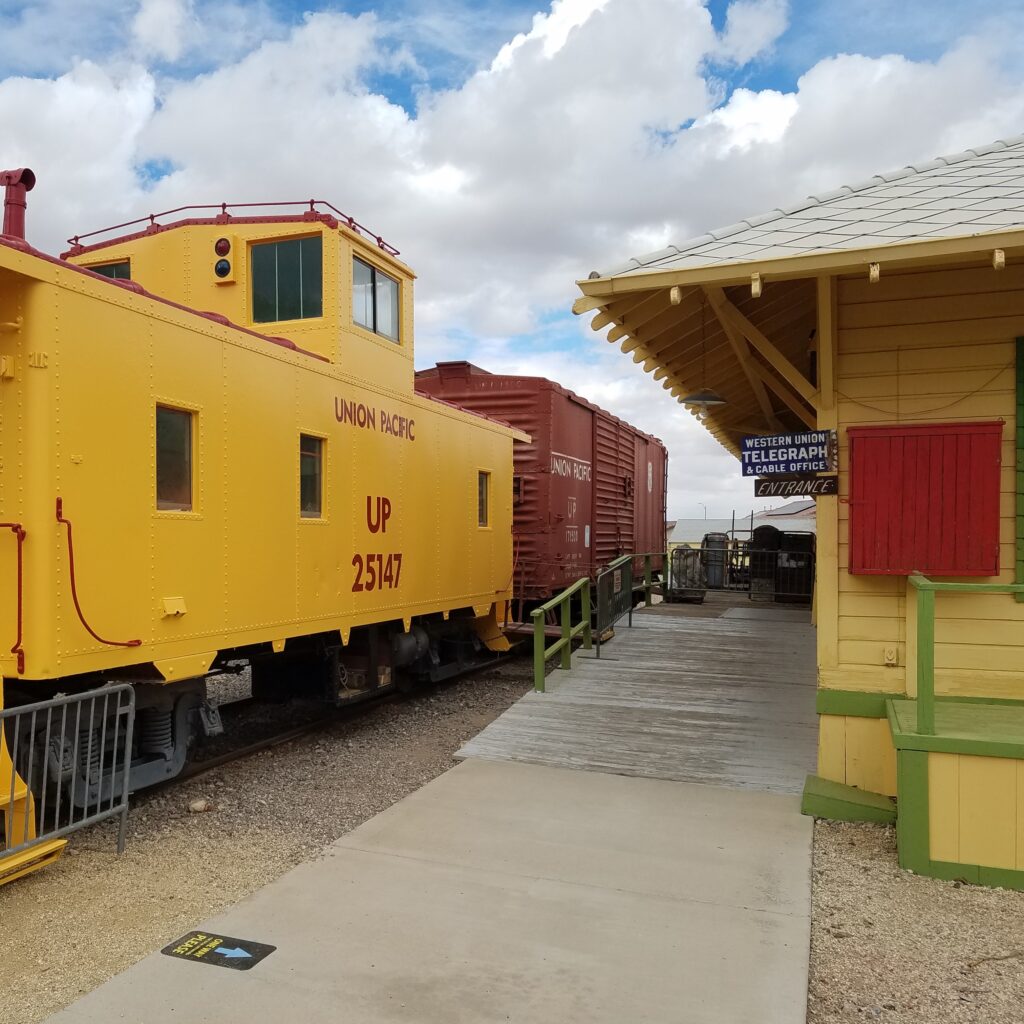
The old Boulder City Depot, the first building on the museum site, housed the museum from 1979 to 1990, Clark County Museum, Henderson, Nevada, March 11, 2021 | Photo by Reuben Wadsworth, St. George News

The Will and Leva Beckley House, built in downtown Las Vegas in 1912, was the first historic home to be moved to the Clark County Museum, Henderson, Nevada, March 11, 2021 | Photo by Reuben Wadsworth, St. George News
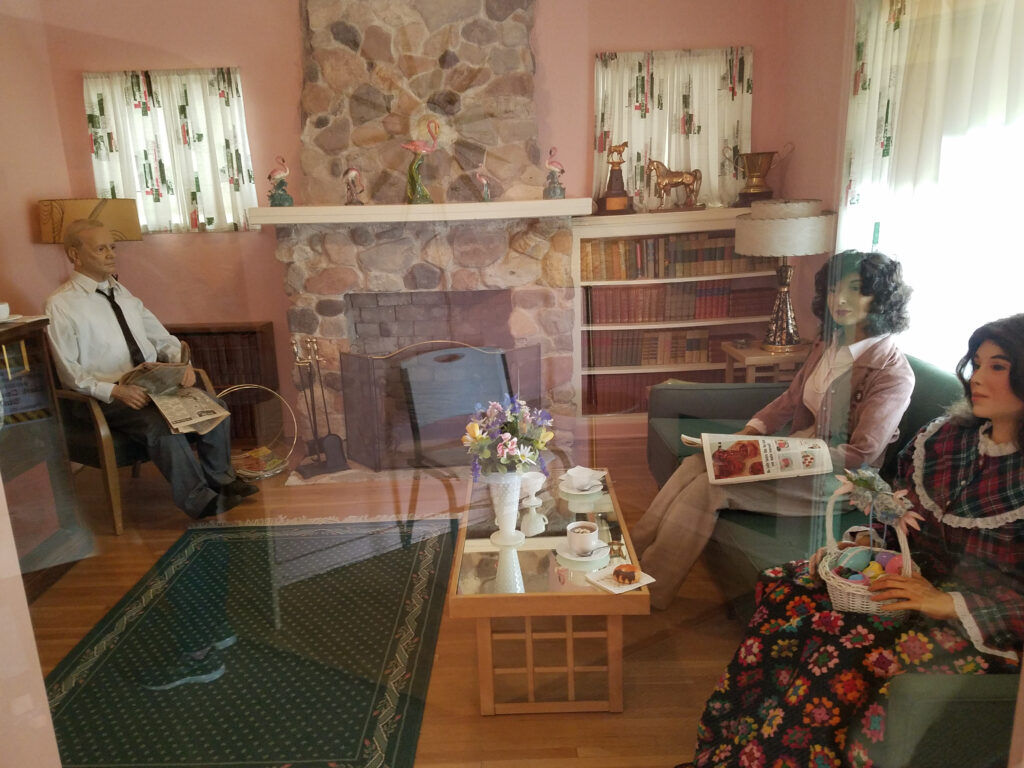
Mannequins as well as period furnishings and decor behind glass in the Goumond House give visitors a taste of what life was like for the Goumond family in the 1950s, Clark County Museum, Henderson, Nevada, March 11, 2021 | Photo by Reuben Wadsworth, St. George News
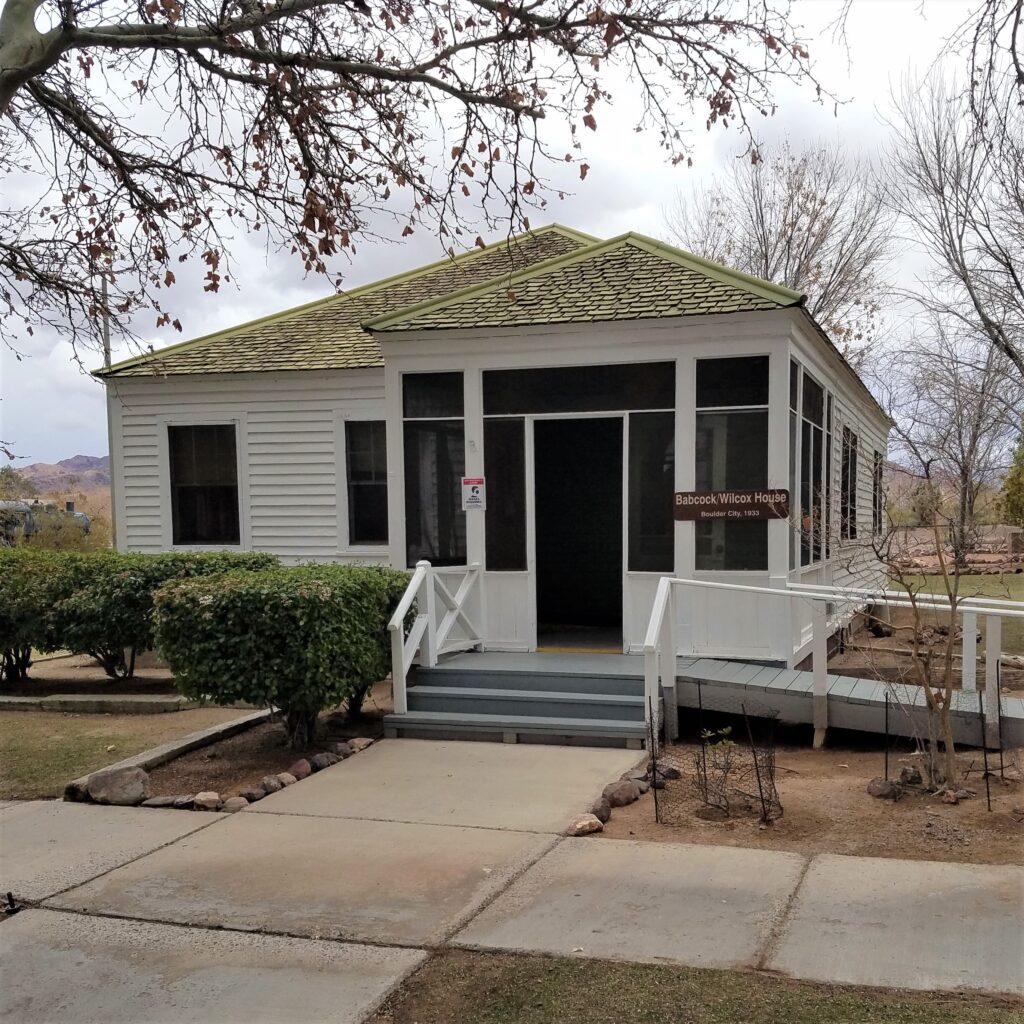
The Babcock and Wilcox House, original built to house employees helping to build Hoover Dam, arrived on the museum property in 1987, Clark County Museum, Henderson, Nevada, March 11, 2021 | Photo by Reuben Wadsworth, St. George News

The Henderson Townsite Home, built for workers at the Basic Magnesium Plant, was the second home to be moved to the property, Clark County Museum, Henderson, Nevada, March 11, 2021 | Photo by Reuben Wadsworth, St. George News
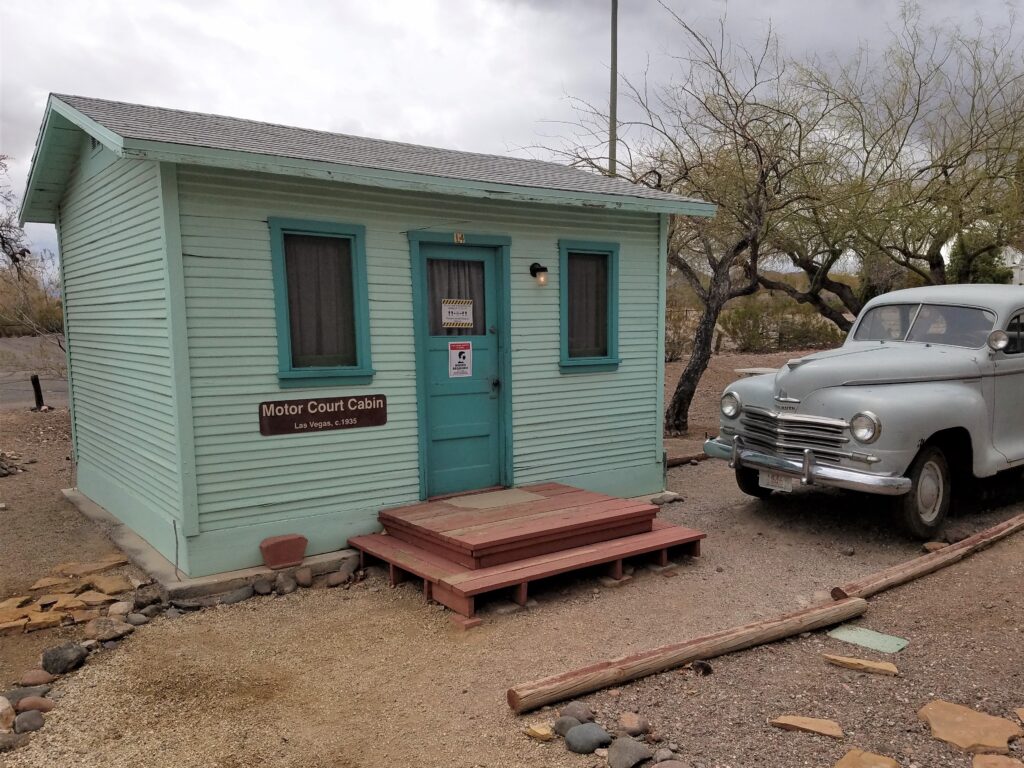
In addition to historic, restored homes, Heritage Street also features this motor court cottage, Clark County Museum, Henderson, Nevada, March 11, 2021 | Photo by Reuben Wadsworth, St. George News

In addition to historic, restored homes, Heritage Street also features this 1940s trailer, Clark County Museum, Henderson, Nevada, March 11, 2021 | Photo by Reuben Wadsworth, St. George News
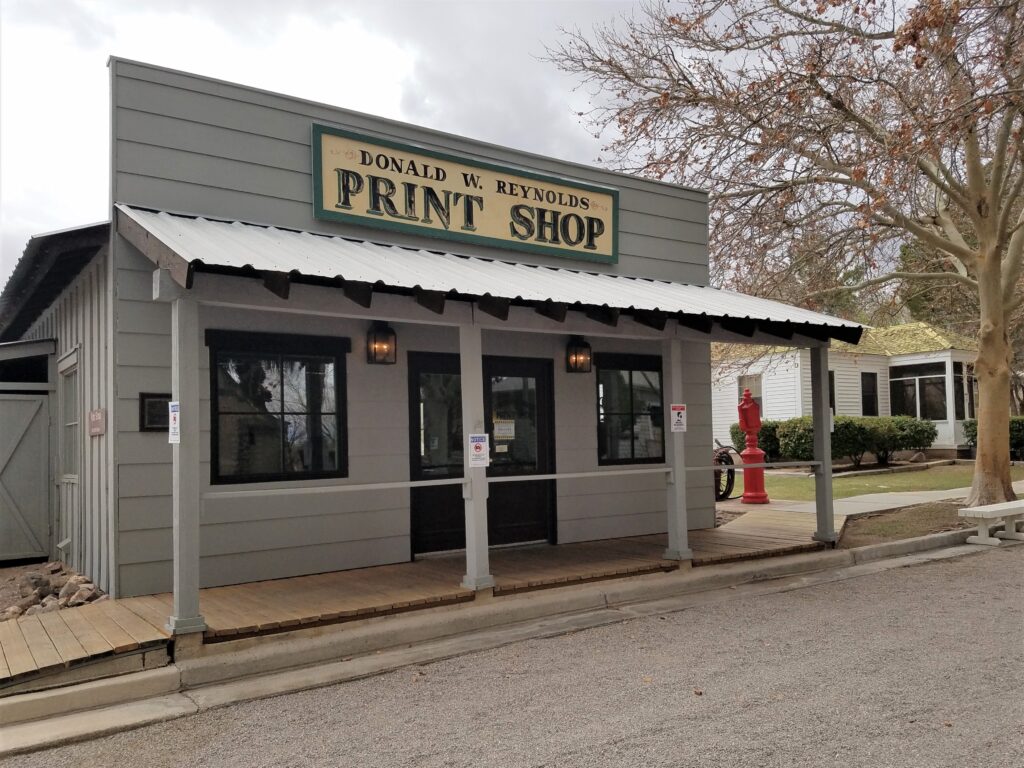
This replica of the Donald W. Reynolds Print Shop was completed in 1984 and provides information about Southern Nevada's former and current newspapers, Clark County Museum, Henderson, Nevada, March 11, 2021 | Photo by Reuben Wadsworth, St. George News

The interior of the Donald W. Reynolds Print Shop displays antique printing equipment such as an 1890 Babcock Printing Press, Clark County Museum, Henderson, Nevada, March 11, 2021 | Photo by Reuben Wadsworth, St. George News
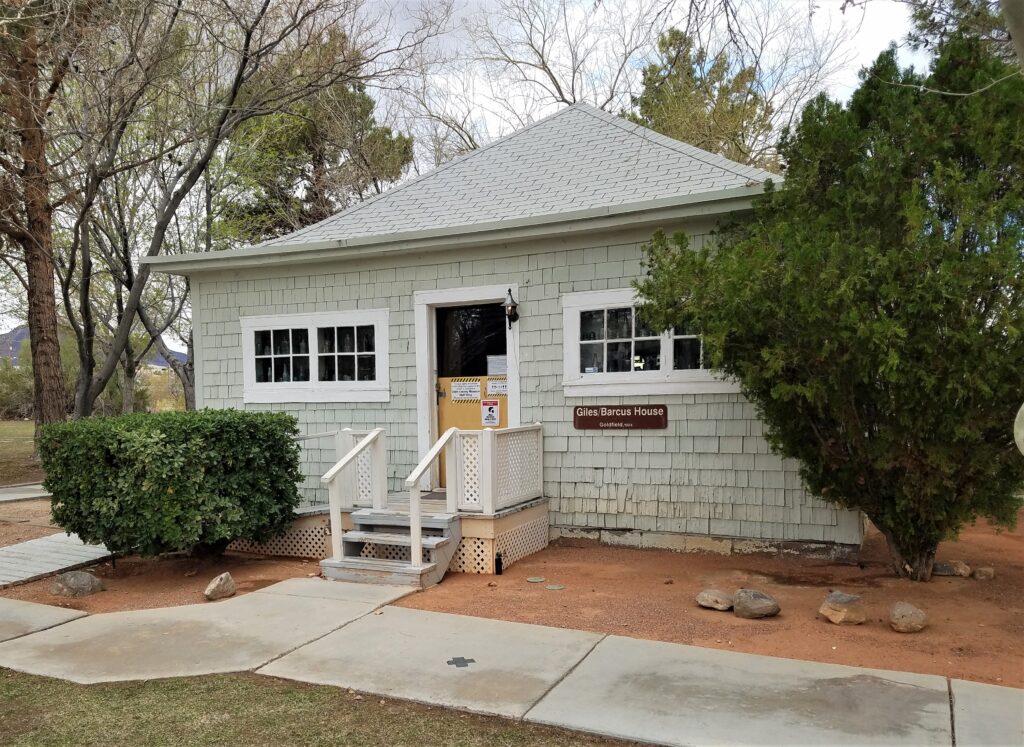
The original location of the Giles/Barcus House was in the mining boomtown of Goldfield, Clark County Museum, Henderson, Nevada, March 11, 2021 | Photo by Reuben Wadsworth, St. George News
About the series “Days”
“Days” is a series of stories about people and places, industry and history in and surrounding the region of southwestern Utah.
“I write stories to help residents of southwestern Utah enjoy the region’s history as much as its scenery,” St. George News contributor Reuben Wadsworth said.
To keep up on Wadsworth’s adventures, “like” his author Facebook page, follow his Instagram account or subscribe to his YouTube channel.
Wadsworth has also released a book compilation of many of the historical features written about Washington County as well as a second volume containing stories about other places in Southern Utah, Northern Arizona and Southern Nevada.
Read more: See all of the features in the “Days” series
Email: [email protected]
Twitter: @STGnews
Copyright St. George News, SaintGeorgeUtah.com LLC, 2021, all rights reserved.

